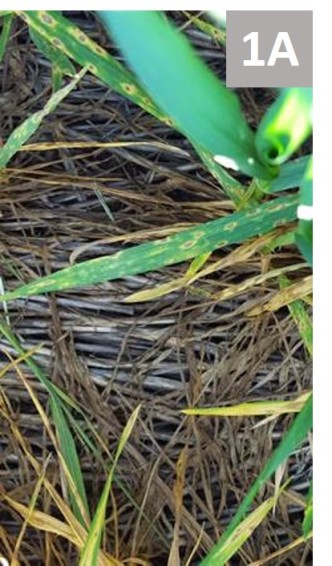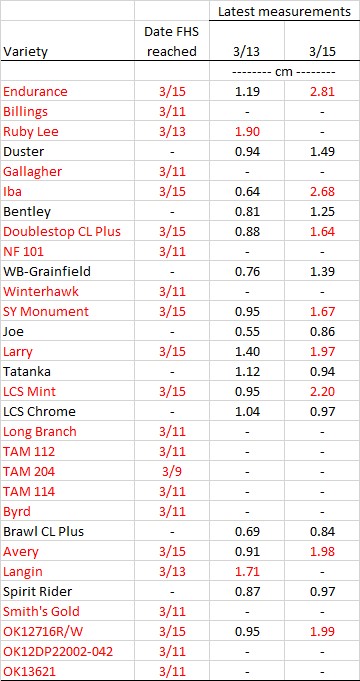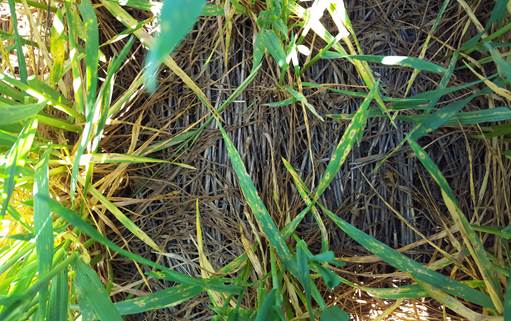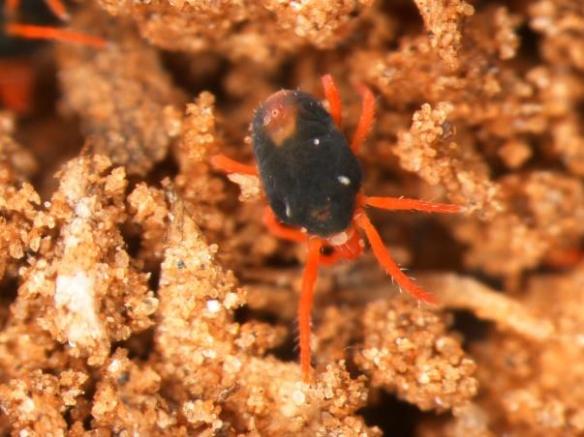Temperatures in Oklahoma over the weekend (Fig. 1) and on Tuesday night into Wednesday morning (Fig. 2) dipped low enough to potentially cause some level of injury to the wheat crop. There were a number of areas that spent at least a couple hours with temperatures in the mid to lower 20s.

Figure 1. Hours spent below freezing (32°F) last week (3/6 – 3/12). Most of these cold temperatures occurred from 3/11-3/12.
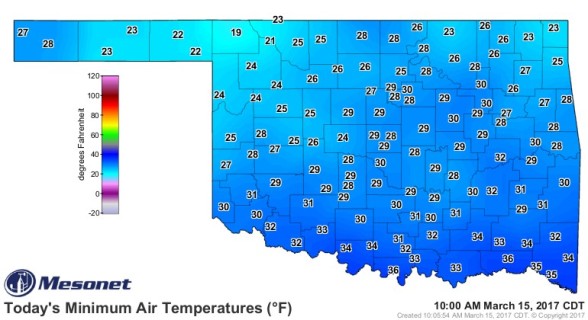
Figure 2. Minimum air temperatures during Tuesday night (3/14) into Wednesday morning (3/15).
Keep in mind that the temperature recorded by the nearest weather station or at your house may not quite reflect the actual temperature that the wheat canopy experienced. Factors such as elevation and topography can influence the temperature, as well as things like large amounts of residue in a no-till situation, for example. Therefore, it is important to monitor each field.
What temperatures can damage wheat plants? This will depend on the growth stage. The susceptibility and temperature threshold to freeze injury steadily increases as we progress throughout the spring from jointing to heading and flowering. Earlier maturing varieties may be injured more from these recent freeze events than later maturing varieties because they are likely more advanced. Anecdotal evidence suggests there are varietal differences in resistance to spring freeze injury, but this is likely due to differences in plant growth stages when the freeze event occurred. Figure 3 provides a general guide, or rule of thumb, to the minimum temperature threshold and its impact on yield. It is difficult to have exact numbers because each freeze event is unique. While a field at the jointing growth stage could have spent two hours at 24° F, it is possible that the same amount of injury could occur with a 28° F temperature that was sustained for a longer period of time.

Figure 3. Temperatures that can cause injury to winter wheat at different growth stages. Source: Kansas State University.
Another important thing to keep in mind is that we need to be patient before going out to assess freeze injury. The extent of a significant freeze event may not be apparent 1 or 2 days after. If warm temperatures return quickly, you should still wait about 5-7 days after the freeze event before determining the injury. If temperatures remain cool, it may take 10-14 days before the extent of the injury can be fully assessed. With our recent cold temperatures occurring earlier this week, beginning to check plants this weekend and into early next week should suffice, especially with the warmer temperatures forecasted.
What are some freeze injury symptoms to look for? With these recent freeze events, the most likely symptom will be leaf tip “burning” or “die-back” (Fig. 4). This is very often just cosmetic and will not hurt yield in the end. In areas that dipped into the lower 20s, damage can result in the entire leaf turning yellow to white, and the plants becoming flaccid (Fig. 5). You may even notice a “silage” smell after several days.
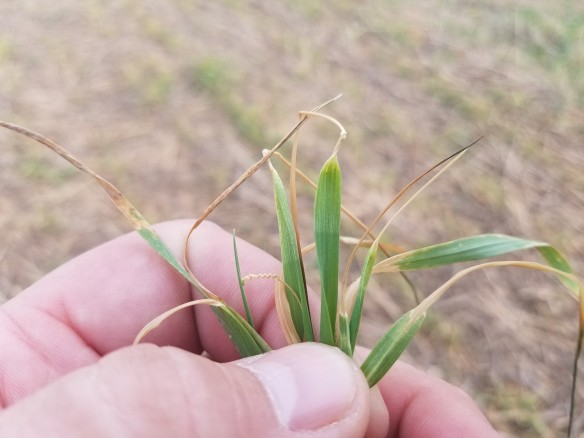
Figure 4. Leaf tips which have turned brown (necrotic) due to freezing temperatures. Photo courtesy of Josh Bushong, OSU northwest area Extension agronomist.

Figure 5. More severe freeze damage causing the leaves to turn yellow-white with plants losing their overall turgidity. Source: Kansas State University.
The most important plant part to check though is the growing point. To get a look at the growing point, you can slice the stem open lengthways. A healthy growing point will have a crisp, whitish-green appearance and will be turgid (Fig. 6). Often, you can lightly flick the head. If it does not break and bounces back, it is still healthy. If it is mushy, limp, and parts of it break off when you lightly flick it, then it has been compromised and will likely soon turn necrotic. Sometimes plants can appear healthy overall, but the growing point has been damaged or killed (Fig. 7-8). Another indication that the growing point has been compromised is the next emerging leaf is already necrotic.

Figure 6. Close up of a healthy wheat head (growing point). Photo: Brenda Kennedy and Dr. Carrie Knott, University of Kentucky.

Figure 7. Plants that appear healthy could have damaged heads. Photo: Dr. Jeff Edwards.

Figure 8. A close up view of the damaged wheat head from Figure 7.
The last comment I want to make is the percent of damaged heads that you find may not translate into percent yield loss, especially with the growth stage a lot of our wheat is at. There is still opportunity for wheat even at the jointing stage (GS 6) to produce additional tillers and/or retain secondary tillers. Whether or not these tillers are able to compensate for larger tillers that were lost due to freeze will highly depend on the subsequent weather. If conditions are favorable, there is a chance for late emerging tillers to have a shot at producing grain. If the wheat is more advanced though, it will be tougher to make this type of recovery.

